It’s a beautiful November morning in Southeast Alaska. The dawning sun is shining like liquid gold on the rippling waves as the Seagrove Kelp Co. team makes their way to their kelp farm, six miles outside of the small coastal community of Craig, Alaska. Fish totes cover the deck of the F/V Katlian, filled with spools of kelp babies ready to be transplanted to their new home in the temperate waters below.
They might not look like much, but the brown coloration on the pictured spools represents millions of nearly microscopic fronds of baby kelp; when in the water, the spools look covered in dense brown fuzz. Up to this point, the spools of baby kelp lived a carefully controlled life. For them, it all started in the sori (reproductive tissues in kelps) of their parents, which were carefully harvested from wild kelp populations and transferred to Seagrove Kelp Co.’s nursery in Ketchikan. In the nursery, kelp spores were released from the sori into large tanks that held PVC “spools” wrapped in 250 feet of nylon twine. The spores settle on the twine and eventually grow into new baby kelp after about four to six weeks in the nursery under the watchful eye of Dr. Tiffany Stephens, Seagrove’s Chief Scientist and Research Director, and other critical nursery staff. At the nursery the kelp live in temperature and light controlled tanks with plenty of nutrients. These tanks are, essentially, aquatic greenhouses. Soon enough, the babies are strong enough to face the real world out on the farm in Doyle Bay, where they will grow in the sea until spring.
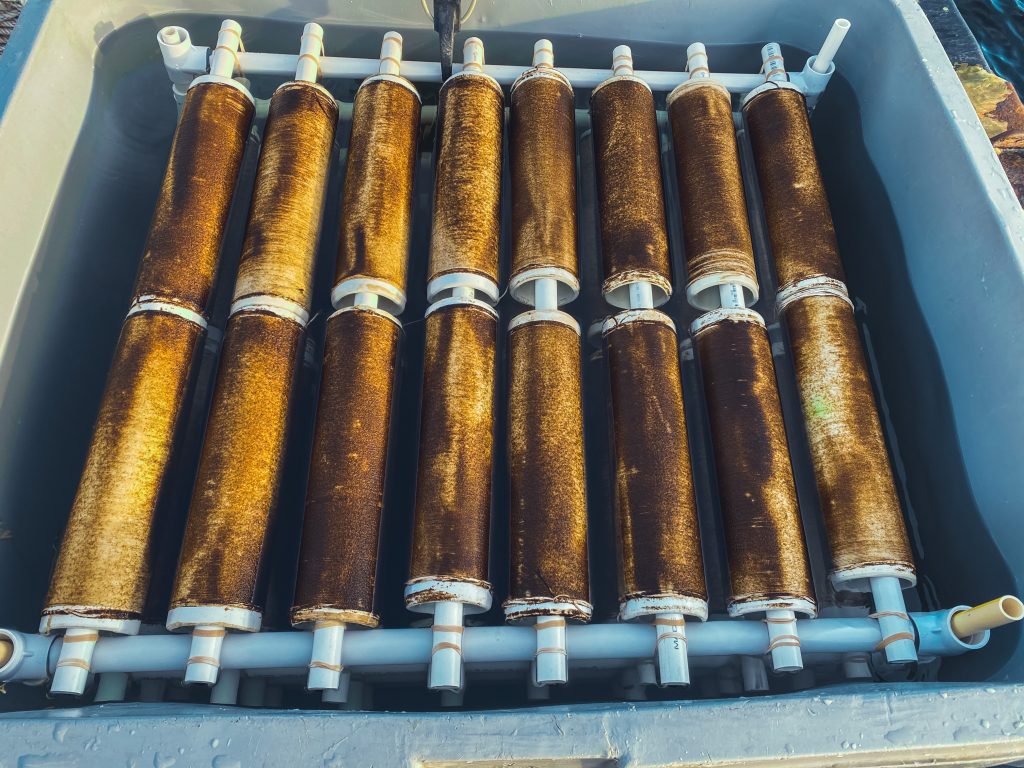
On seed transfer day, the spools are loaded onto PVC frames in insulated fish totes and covered in cold seawater. They travel as most Southeast Alaskans do, by ferry. When they reach their destination on Prince of Wales Island, they are destined to be transplanted within a few days but as the weather permits.
Weather is everything in Southeast Alaska. On a calm and sunny day, the Seagrove team can plant up to 16,000 feet (about three miles!) of line seeded with kelp — but when the wind and rain move in, the team moves out, often resulting in the seeding process lasting several weeks to complete.
The Seagrove Kelp Co. farm being seeded, today, is nestled in Doyle Bay. There is no human development in sight save for the bright yellow and orange buoys that mark the anchors and kelp lines. Today, the deep green of the Tongass forest radiates warmth as the mountainous slopes reach down to the rocky coastline. The crew sets to work quickly, all five of them decked-out in rain gear and Xtratufs and they soon situate themselves between three vessels, the F/V Katlian and two skiffs nicknamed The Hog and Arduous. The company’s “seed launcher” — an aluminum arm that holds the PVC seed spools — is readied on one of the skiffs with the Operations Manager and Seeding Queen, Melyssa Nagamine at the helm. She expertly ties the seed line off onto the grow line and lets her team know it’s go-time!

And the seeding begins!
The baby kelp on the PVC spools need to find their way to living on a thicker line that can persist through winter storms and then harvest in Doyle Bay. To help them, we run a line through the middle of the PVC spool, making sure to tie the seed twine to one end of the line. As the skiff begins to slowly reverse with the seed twine tied to the thicker line on one side of the farm, the twine, coated in baby kelp, wraps itself around the grow line and sinks into the depths below. Well, eight feet below.
The team soon falls into a rhythm: set the buoy, anchor the line, tie the twine, reverse the skiff, and repeat. They take turns shouting directions into hand-held radios as the engines putter behind them and the ocean gently cradles the boat. The process is non-stop and the work physical, but the air is light as the team laughs and jokes around with each other. There is no day like a day of sunshine and kelp on the water.
Stopping for lunch, they take time to enjoy each other’s company. This team comes from all over the state of Alaska and they each have varying backgrounds in commercial fishing. The love of the ocean, the knowledge of how to move and operate on a commercial fishing boat, and the ability to seamlessly work safely together is what makes the Seagrove team so efficient.
Together, they’ll plant 100 acres of kelp in the wild, temperate waters of Southeast Alaska this year.
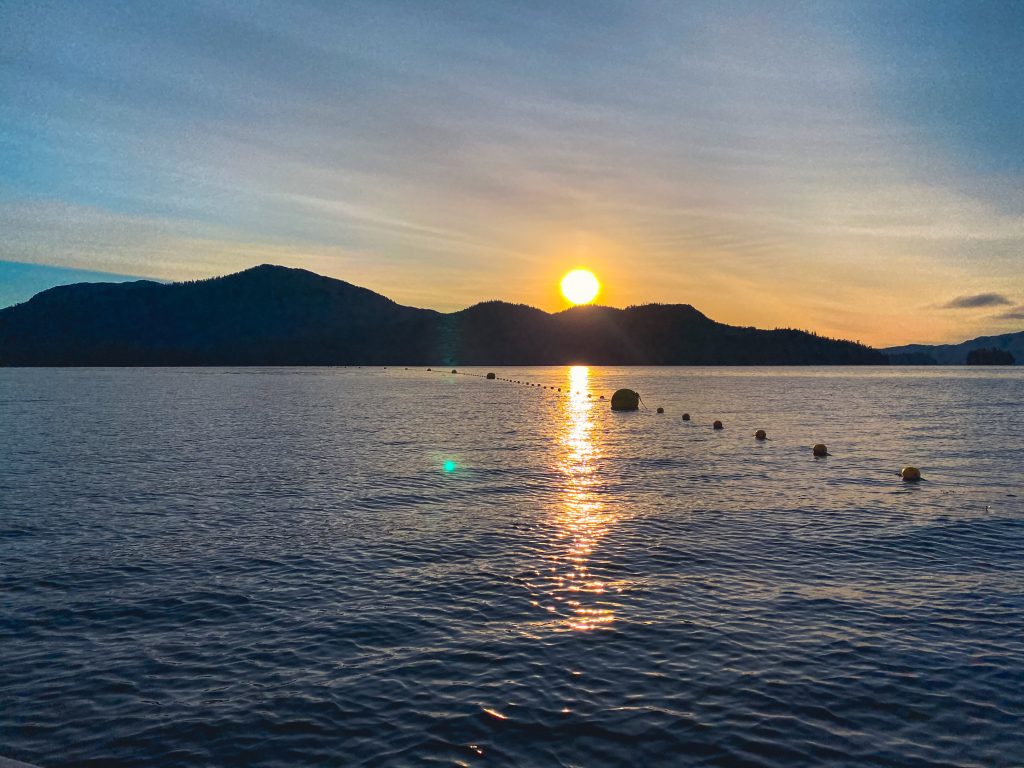
The farm and juvenile kelp will be monitored throughout the winter by the care of the Seagrove team. Seeding the farm is only one step in the journey of wild Alaskan kelp floating with the tide to the nutritious and flavorful kelp on your table. As the weeks stretch and as the weather bites down, the kelp patiently wait for day lengths to increase after the winter solstice before they begin to grow into the adult kelp we are familiar with. The lines will be pulled in spring, heavy with adult kelp.
As the sun sets on the first day of seeding, the crew motors back to town — wet, tired, and content with a day of work in the brine. They hold the knowledge that the kelp they planted today will become one of the most nutrient-rich and sustainable products on the market. That the kelp they planted, today, will not only enhance food security but also has a lower carbon footprint than any land-based food production because kelp farming is zero-input and also helps ameliorate localized ocean acidification. Truly, seeding kelp is an honest day’s work for any seasoned farmer or fisher, and the Seagrove Kelp Co. farmers are a part of a new legacy of environmentally-friendly production and an industry built around and for the people it shares this planet with.
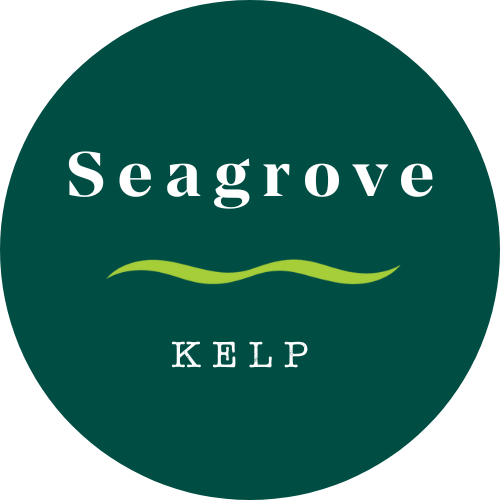
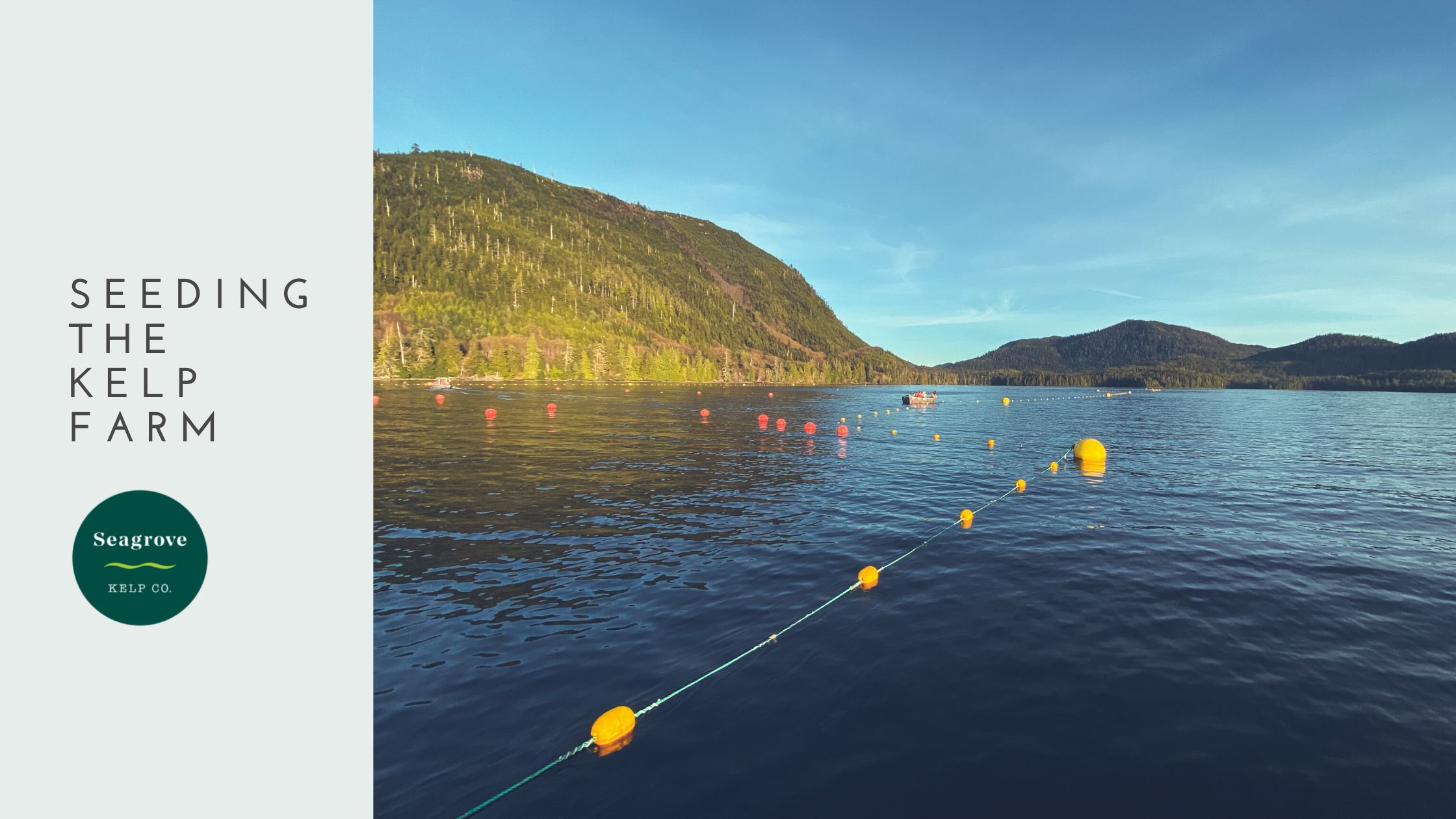
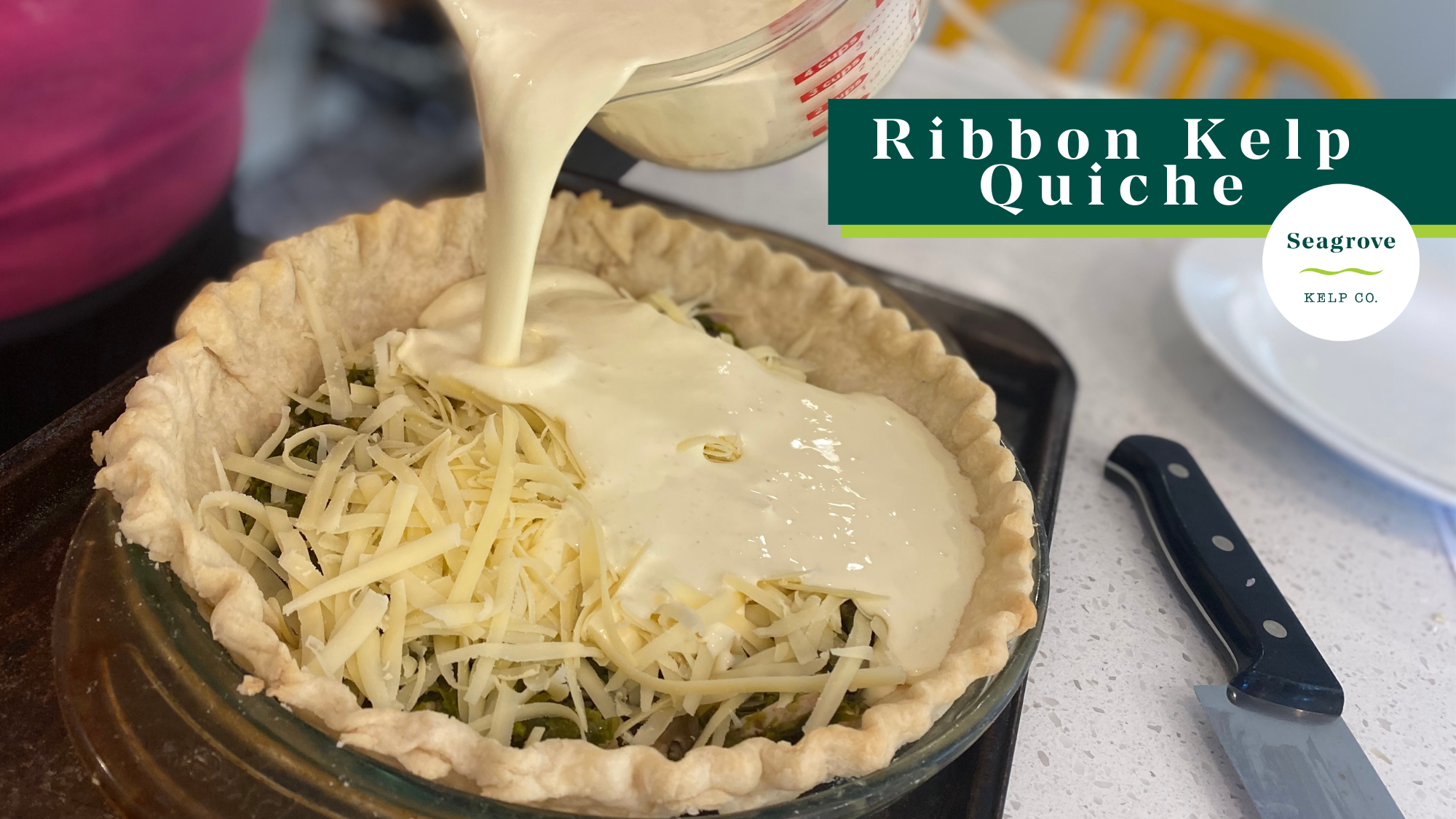


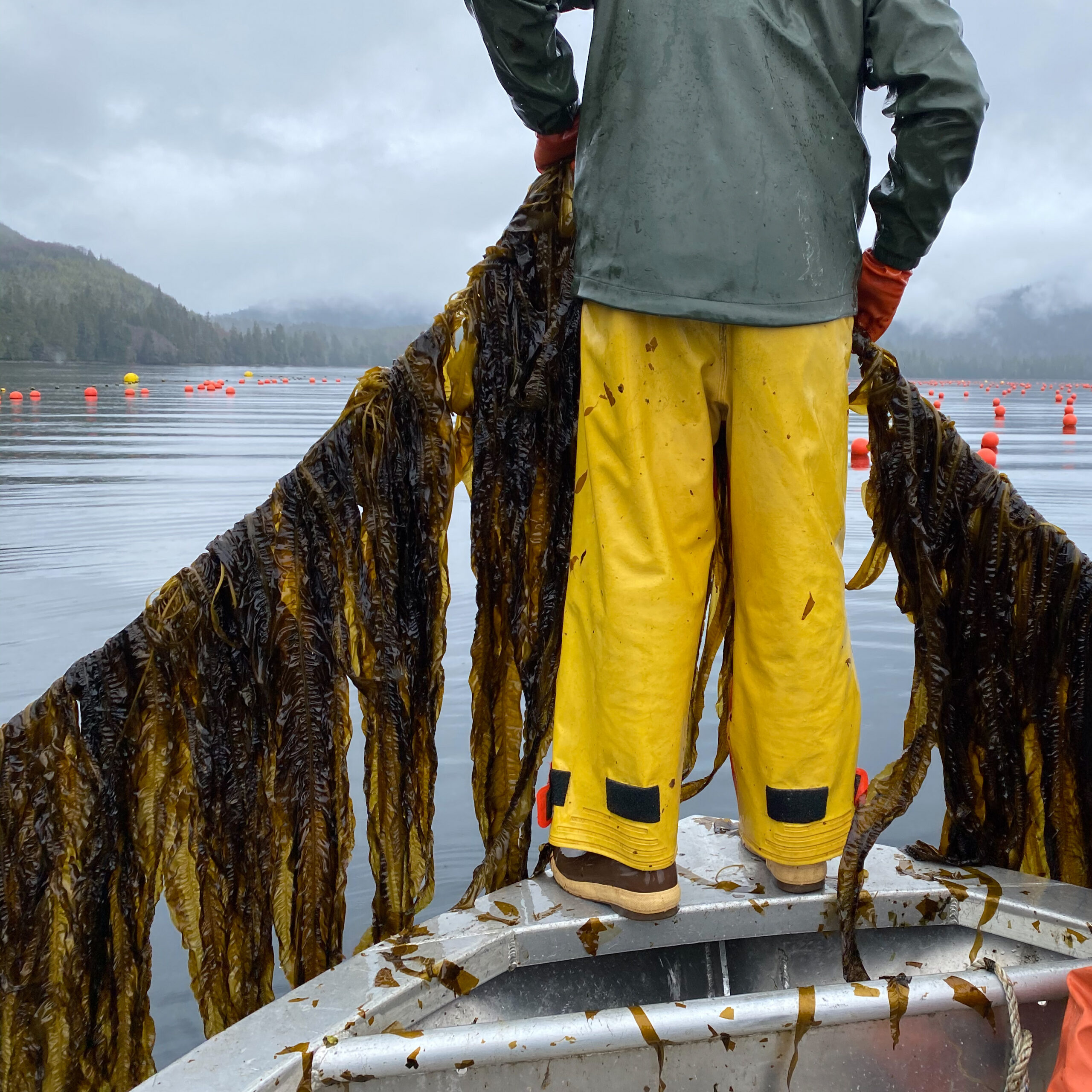
2 Responses
I can not wait to read far more from you. This is really a wonderful site.
What an interesting, well-written article! I learned more than I ever knew there was to learn about kelp and enjoyed the read while I was about it. Congrats on the great blog and well wishes for success on seeding of the kelp!